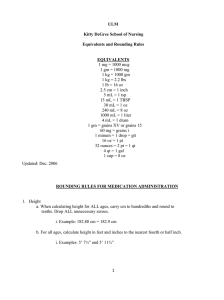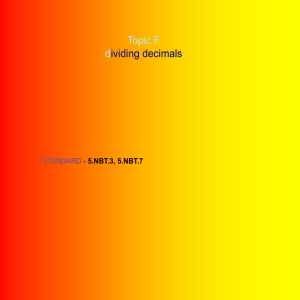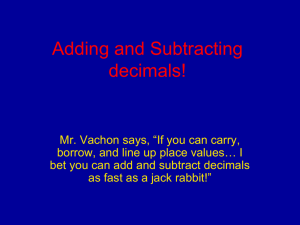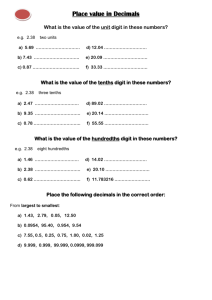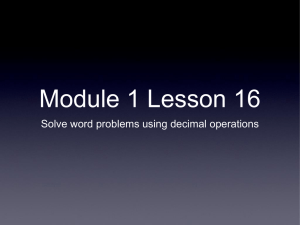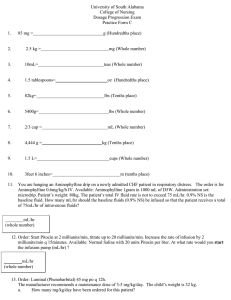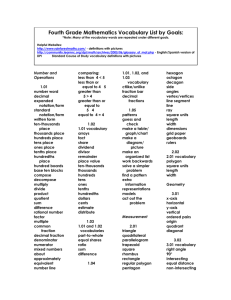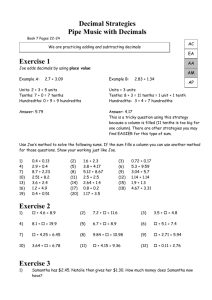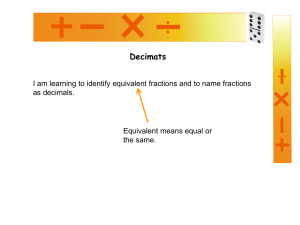Rounding Rules EQUIVALENTS
advertisement
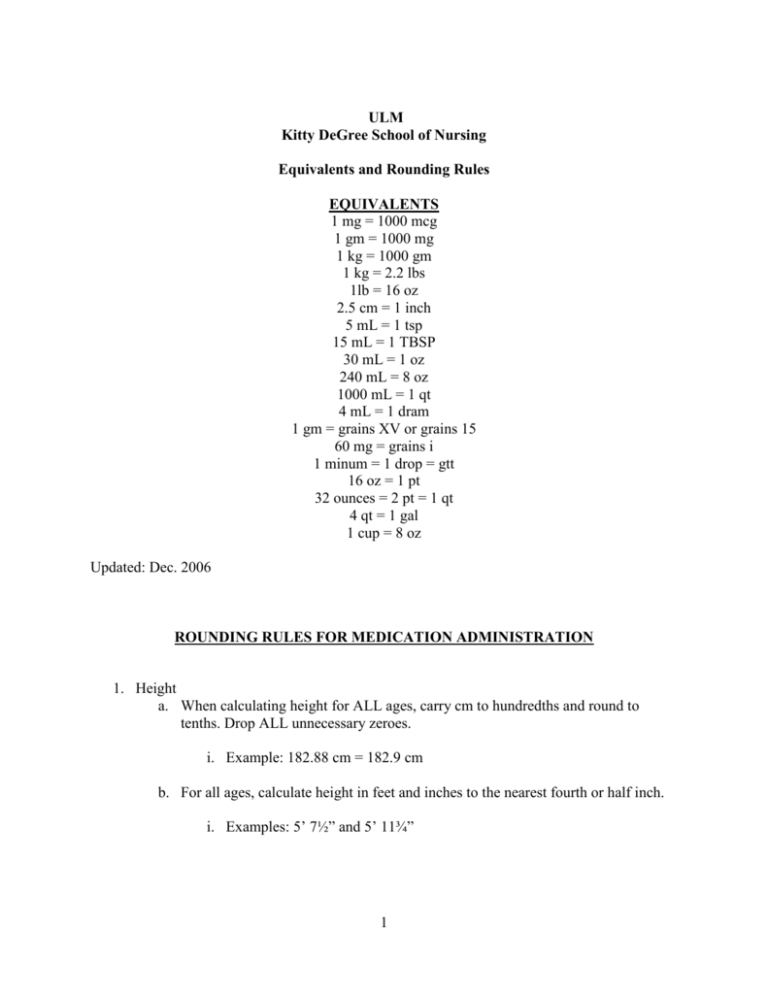
ULM Kitty DeGree School of Nursing Equivalents and Rounding Rules EQUIVALENTS 1 mg = 1000 mcg 1 gm = 1000 mg 1 kg = 1000 gm 1 kg = 2.2 lbs 1lb = 16 oz 2.5 cm = 1 inch 5 mL = 1 tsp 15 mL = 1 TBSP 30 mL = 1 oz 240 mL = 8 oz 1000 mL = 1 qt 4 mL = 1 dram 1 gm = grains XV or grains 15 60 mg = grains i 1 minum = 1 drop = gtt 16 oz = 1 pt 32 ounces = 2 pt = 1 qt 4 qt = 1 gal 1 cup = 8 oz Updated: Dec. 2006 ROUNDING RULES FOR MEDICATION ADMINISTRATION 1. Height a. When calculating height for ALL ages, carry cm to hundredths and round to tenths. Drop ALL unnecessary zeroes. i. Example: 182.88 cm = 182.9 cm b. For all ages, calculate height in feet and inches to the nearest fourth or half inch. i. Examples: 5’ 7½” and 5’ 11¾” 1 2. Weight a. When converting body weight from lbs to kg, calculate to hundredths and round to tenths, dropping all unnecessary zeros. i. Examples: 8.272 kg = 8.3 kg 9.968 kg = 10 kg 14.225 kg = 14.2 kg b. When converting body weight from kg to lbs, express answer in lbs and nearest half oz. i. Example: 39.47 lbs = 39 lbs, 7½ oz c. When calculating weight-based dosage (i.e., mg/kg or mcg/kg, etc.), do not round final calculation until the final calculation. Round only at the end of the calculations. 3. Temperature a. Round all temperatures to the nearest tenth. Drop unnecessary zeroes. i. Examples: 98.68° F = 98.7° F 31.00° C = 31° C 4. Metric Fluid Volume a. If the final volume is less than 1 mL, a zero must precede the decimal. i. Example: .732 mL = 0.73 mL b. If the final volume is greater than 1 mL, round all fluid measurements to tenths. If final volume is less than 1 mL, go to thousandths and round to hundredths. Drop all unnecessary zeroes. i. Examples: 1.60 mL = 1.6 mL 1.03 mL = 1 mL 1.35 mL = 1.4 mL 0.456 mL = 0.46 mL 5. When calculating flow rates for an infusion pump, the final answer will be rounded to tenths or hundredths according to the infusion pump. When an infusion pump is not available, calculate drops per minute as a whole number. (Drops cannot be fractionated.) 6. As a general rule, carry mg to hundredths and round to tenths. Drop unnecessary zeroes. Exceptions: Pediatric population and certain medications (i.e., Digoxin 0.125 mg) a. Example: 7.46 mg = 7.5 mg 2 7. Use whole numbers and/or fractions (i.e., ½ or ¼) with tablets. Use only whole numbers with capsules. a. Examples: 1 tablet 1½ tablets 2 capsules 8. Time a. Military time – four digits, no colon, no a.m./p.m. i. Example: 1400 b. Non-military time – must include colon and a.m./p.m. i. Example: 2:00 p.m. 9. Units of measurement must be included in answers. Revised 4/04; 1/07; proposed update 1/13 3
